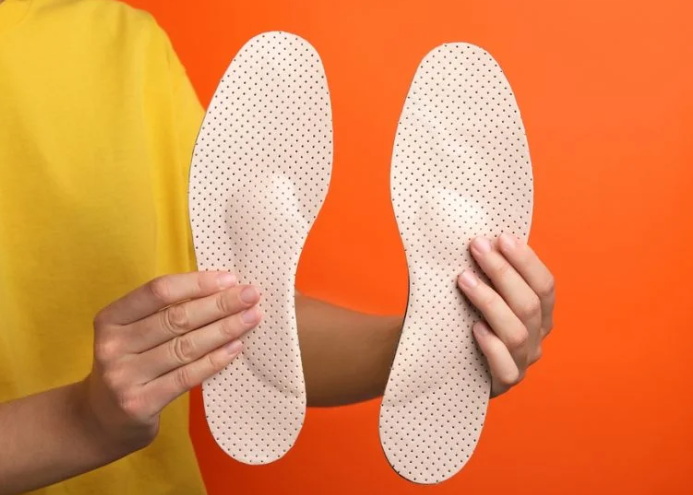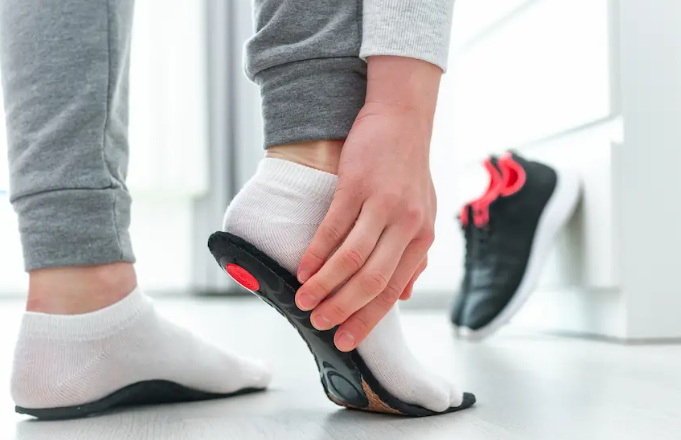Views: 222 Author: Edvo Publish Time: 2025-10-15 Origin: Site











Content Menu
● What Are Orthopedic Insoles?
● Medicare Coverage for Orthopedic Insoles
>> Eligibility and Coverage Details
>> Medicare Part B covers one of the following each calendar year:
● Costs and Payment Responsibilities
● Obtaining Medicare Orthopedic Insoles Coverage
● Additional Benefits and Services
>> Summary of Medicare Orthopedic Insoles Benefits:
● FAQ
>> 1. Does Medicare cover orthopedic insoles for all foot problems?
>> 2. How many orthopedic insoles does Medicare cover each year?
>> 3. What costs do Medicare beneficiaries pay for orthopedic insoles?
>> 4. Can anyone sell orthopedic insoles and get Medicare reimbursement?
>> 5. Are custom foot orthotics covered even without therapeutic shoes?
Orthopedic insoles, also called orthotic inserts or therapeutic shoe inserts, are specially designed shoe inserts intended to support, align, and relieve discomfort in the feet caused by conditions such as diabetes, arthritis, plantar fasciitis, and other musculoskeletal issues. Many people who need orthopedic insoles wonder if Medicare covers their cost. This article explains Medicare's coverage for orthopedic insoles in detail, including eligibility criteria, types of insoles covered, costs, how to obtain coverage, and frequently asked questions.

Orthopedic insoles are custom or pre-made shoe inserts created to improve foot function and comfort by correcting structural foot problems or accommodating injuries. They can relieve pressure on specific areas of the foot, improve gait, and reduce pain caused by deformities, arthritis, diabetic neuropathy, or injury.
Orthopedic insoles come in different types:
- Custom-molded insoles made from a cast or 3D scan of the wearer's foot
- Extra-depth shoes with removable therapeutic insoles
- Inserts with shoe modifications to improve fit or relieve pressure points
Medically prescribed orthopedic insoles differ from general comfort shoe inserts in that they are intended to address a diagnosed medical condition.
Medicare Part B (Medical Insurance) covers orthopedic insoles only under specific conditions. Coverage mainly focuses on people with diabetes who have severe diabetes-related foot disease. Orthopedic shoes and inserts can help prevent complications that may lead to serious foot problems and amputations.
To qualify for coverage, a Medicare beneficiary must:
- Have a diagnosis of diabetes with severe foot complications,
- Obtain certification and prescription for therapeutic shoes and orthotic inserts from a Medicare-enrolled healthcare provider who treats their diabetes,
- Purchase shoes and inserts from Medicare-approved suppliers and providers.
- One pair of custom-molded shoes with inserts, plus two additional pairs of inserts for these shoes, or
- One pair of extra-depth shoes with inserts, plus three additional pairs of inserts.
Medicare also covers shoe modifications that are medically necessary instead of inserts.
Orthopedic insoles prescribed as part of leg braces or ankle-foot orthoses (AFOs) and knee-ankle-foot orthoses (KAFOs) are also covered under Medicare Part B.
Under Medicare Part B, after the annual deductible is met, Medicare typically pays 80% of the approved cost for orthopedic shoes and insoles, leaving the beneficiary responsible for the remaining 20%. For example, if orthopedic insoles cost $600, Medicare would cover $480, and the patient would pay $120 out of pocket.
It is important that both the prescribing healthcare provider and the supplier are enrolled in Medicare. Claims submitted by non-enrolled providers will not be covered.
Medicare Part A may cover orthopedic insoles or braces during inpatient hospital stays or skilled nursing facility stays if they are medically necessary for treatment or rehabilitation related to surgery or injury.
To receive coverage, Medicare beneficiaries should:
1. Get a prescription from a Medicare-enrolled podiatrist, orthotist, prosthetist, pedorthist, or other qualified healthcare provider.
2. Have their treating physician certify the medical necessity of therapeutic shoes and insoles.
3. Purchase the shoes and insoles from a Medicare-authorized supplier.
4. Submit claims through Medicare for reimbursement following the supplier's handling of paperwork.

Medicare coverage for orthopedic insoles is limited:
- Coverage is primarily for patients with diabetes severe enough to require specialized therapeutic shoes.
- Orthopedic soles prescribed solely for comfort or cosmetic reasons are not covered.
- Custom foot orthotics not associated with the therapeutic shoe benefit are generally excluded.
- Coverage for additional pairs beyond prescribed limits may require out-of-pocket payment.
- Insufficient documentation of medical necessity may result in claim denial.
Medicare Advantage (Part C) plans often provide similar or expanded coverage for orthotics and shoes but may have different rules about suppliers and copayments.
Medicare Supplement (Medigap) plans may help cover some or all of the out-of-pocket costs such as deductibles and coinsurance.
Orthotic devices like ankle-foot orthoses (AFOs) and knee-ankle-foot orthoses (KAFOs) are covered under Medicare's durable medical equipment (DME) benefit when medically necessary and prescribed by a doctor.
People with diabetes who qualify for orthotic coverage also may benefit from related services that Medicare covers, including diabetic foot exams and treatment of diabetic neuropathy to help prevent foot ulcers and infections.
Medicare also covers certain other orthotic braces and supports for legs, knees, back, neck, and upper extremities under specific medical conditions.
| Item | Coverage Limit per Calendar Year |
|---|---|
| Custom-molded shoes | One pair |
| Inserts for custom shoes | Two pairs |
| Extra-depth shoes | One pair |
| Inserts for extra-depth shoes | Three pairs |
| Shoe modifications in lieu of inserts | Covered if medically necessary |
Medicare pays for orthopedic insoles under Part B, but coverage is limited to people with diabetes-related severe foot disease and other specific medical conditions requiring therapeutic shoes. Beneficiaries must have their medical need certified by a Medicare-enrolled healthcare provider and buy insoles from a Medicare-approved supplier. Medicare covers most of the cost after deductible, but patients typically pay 20% coinsurance. Understanding eligibility, coverage limits, and proper procedures helps maximize benefits for those needing orthopedic insoles to improve mobility and foot health.

No. Medicare coverage applies mainly to people with diabetes-related severe foot disease. Orthopedic insoles for general comfort or common foot pain without specific medical diagnosis are not covered.
Medicare Part B covers one pair of therapeutic shoes (either custom-molded or extra-depth) plus additional pairs of inserts each calendar year—usually two for custom shoes and three for extra-depth shoes.
After meeting the annual Part B deductible, beneficiaries pay 20% of the Medicare-approved amount for orthopedic shoes and insoles.
No, suppliers and providers must be enrolled and approved by Medicare for claims to be reimbursed.
Generally, no. Custom foot orthotics not associated with therapeutic shoes or braces prescribed for a medical condition are not covered by Original Medicare.